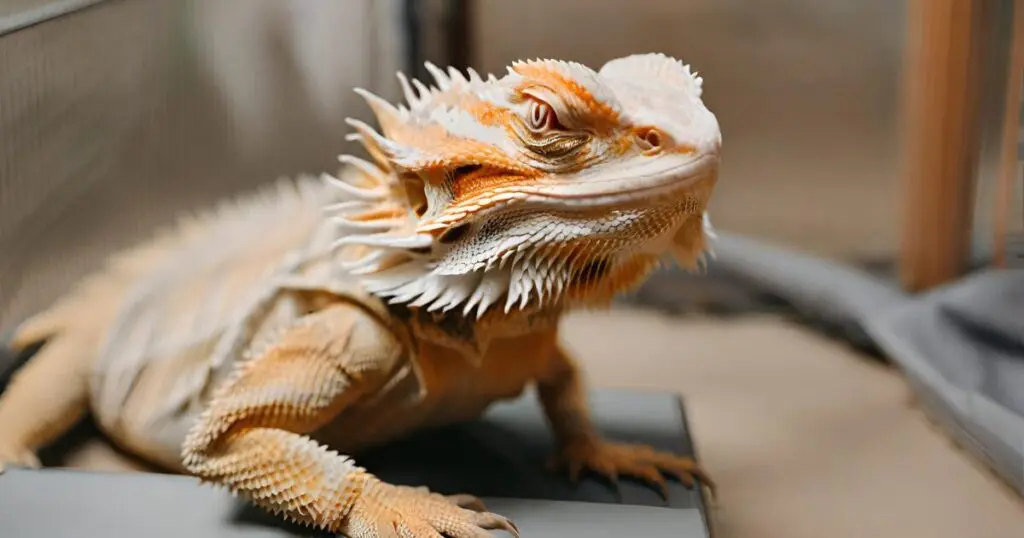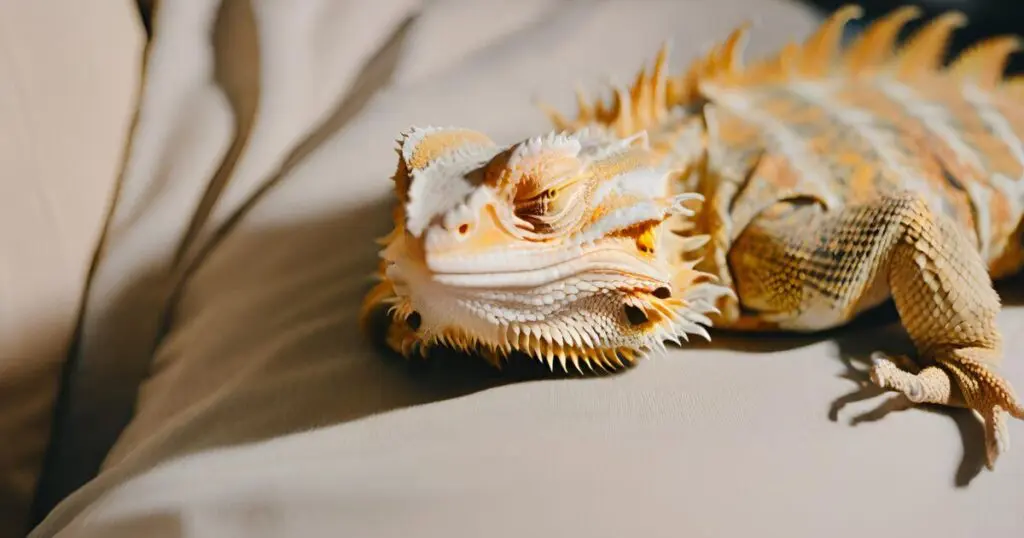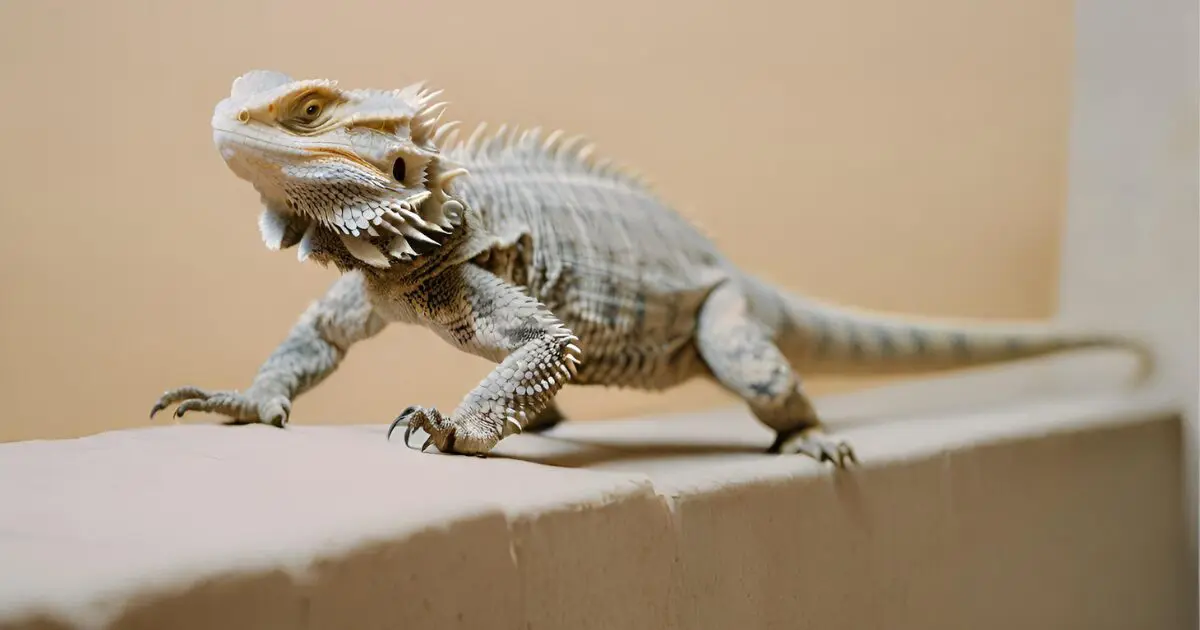I know the feeling – you get a bearded dragon, and suddenly, they’re climbing up your curtains! When I first got Spike, I was surprised to see him scurry up the wall like Spiderman. My immediate thought was, “Can bearded dragons climb walls?”
The short answer is yes! Bearded dragons are natural climbers and enjoy climbing branches and rocks in the wild. Their sharp claws allow them to grip surfaces and propel upwards. While startling at first, climbing is beneficial to exercise and mental stimulation for beardies.
Read on to learn more about bearded dragon climbing habits, safety precautions, and how to create climb-friendly enclosures. With a little know-how, you can let your beardie climb safely!
Do Bearded Dragons Enjoy Climbing?
When I first saw Spike scaling the walls, I thought he was crazy! Do bearded dragons even like climbing? After doing some research, I learned that, yes, most beardies love to climb as they are semi-arboreal! In the wild, they climb branches and rocks to survey their territory and bask in the sun.

Their sharp claws allow them to grip surfaces really well. Climbing exercises their leg muscles and gives them mental enrichment. I can tell Spike really enjoys the activity – he gets this determined look in his eyes when he’s climbing. He’ll even climb his tank decorations just for fun!
Climbing is totally normal behavior for a healthy, active bearded dragon. I just had to make Spike’s habitat safer with some adjustments. Now, he has approved surfaces to climb on, and he seems much happier. So, if your beardie is suddenly acting like a mountaineer, don’t worry!
Also Read: What to Do with a Dead Bearded Dragon?
What to Put in Beardie’s Enclosure to Climb?
When I realized Spike loved climbing, I knew I had to beardie-proof my place! His tank needed some climbing-friendly upgrades so he could satisfy his urge safely.
The best climbing additions for an enclosure are rock formations, driftwood branches, and textured reptile hammocks. I put in a stack of flat rocks for Spike to climb up to his basking spot-like stairs. I also leaned branches against the wall so he could climb up and survey his territory.
For extra grip, I put up a suction-cupped mesh hammock on the side of the tank. Spike loves hanging out on it! Sturdy surfaces like rocks or wood are better than decorations that can fall. And attach any loose items securely.
Then watch your beardie climb without toppling objects or escaping! With some simple, climbable additions, Spike can now scramble happily in his home. A few adjustments gave this lizard a safe space to do what beardies love most – climb!

How Do Bearded Dragons Climb Walls?
Bearded dragons are adept climbers thanks to their sharp claws and strong leg muscles. They use a variety of techniques to scale walls and other surfaces:
- They dig claws into tiny grooves or textures on surfaces to grip
- Alternate pushing with front and back legs in a “walking” motion
- Use long toes and claws to grasp ledges and cling to objects
- Flatten the body against the surface to maximize contact and friction
- Swivel joints and move laterally to navigate around obstacles
- They use tails to counterbalance weight while climbing vertically
- Powerful hind legs provide bursts of speed and lift against gravity
- A low center of gravity and flat belly keep them stable while climbing
Benefits of Climbing for Bearded Dragons
Climbing offers many health and enrichment benefits for bearded dragons when done safely. From exercise to mental stimulation, climbing helps beardies thrive.
1. It’s A Good Exercise
Climbing is a great exercise for a bearded dragon’s leg and core muscles. As Spike scales branches and rocks in his tank, he gets a full-body workout. The pushing and gripping motions build strength in his feet, legs, and torso. This helps him stay active and agile as he moves around his habitat, pursuing prey or basking.
2. Provides Enrichment
Climbing provides important mental enrichment for intelligent reptiles like bearded dragons. Spike seems to really enjoy the challenge and stimulation of figuring out how to climb up different objects. This activity engages his prey drive and natural curiosity in a healthy way. It keeps him mentally sharp and active.
3. Self-Regulation
Climbing allows bearded dragons to self-regulate their temperature and exposure to UV light better. As a cold-blooded reptile, Spike climbs to reach his ideal basking spot under the heat lamp. By climbing branches, he can also adjust how close he gets to the UV light as needed.

4. Boosts Their Confidence
Finally, climbing helps boost a bearded dragon’s confidence and security. Spike seems much calmer and assured when he can survey his territory from a high perch. The ability to climb safely gives him a sense of control over his environment.
How to Train Bearded Dragons Climbing?
With some simple training techniques, you can teach your bearded dragon to become a skilled, safe climber. Focus on redirection, encouragement, and setting up their habitat properly.
- Start climbing training early when they are young and agile. Older beardies may be too heavy.
- Redirect to approved climbing spots if they start scaling furniture, curtains, etc. Gently pick them up and place them on a branch.
- Positively reinforce desired climbing – on tank decor, branches, and rocks. Give treats and praise.
- Ensure the habitat has sturdy, securely attached climbing objects they can grip well.
- Angle climbing objects against walls to prevent falling from the ceiling.
- Supervise initial climbing sessions until they get the hang of it.
- Let them climb at their own pace – don’t force it if they seem unsure at first.
- Make sure the decor doesn’t topple over and injure them when climbing.
FAQ
Here is more information that helped me understand bearded dragons’ habits. This may come in handy for you, too.
Can Bearded Dragons Climb Stairs?
Yes, bearded dragons can easily climb up stairs and steps. Their strong claws allow them to grip the edge of each stair and propel upwards. Stairs make a great climbing enrichment activity.
Do Bearded Dragons Climb Trees?
Yes, beardies can climb trees. In the wild, bearded dragons are adept at climbing trees and branches. Their claws allow them to cling to the bark and climb up trees for basking.
Can Bearded Dragons Climb Fences?
Yes, of course. Bearded dragons can definitely climb and grip chain link fences using their claws. Supervise outdoor time to ensure they don’t escape over fences.
Is It Possible to Train Beardies to Climb on Command?
Yes, you can train them. With consistent positive reinforcement like treats, you can train a bearded dragon to climb approved objects on command. Use a keyword like “climb” and point them where to go.
Conclusion
Bearded dragons are avid climbers, and they can climb many things, including walls. You should let them climb as it is beneficial for them both mentally and physically. However, take necessary precautions in the beginning to protect them from any harm and injuries.
For more knowledge, check these:

Thanks for sharing. I read many of your blog posts, cool, your blog is very good.